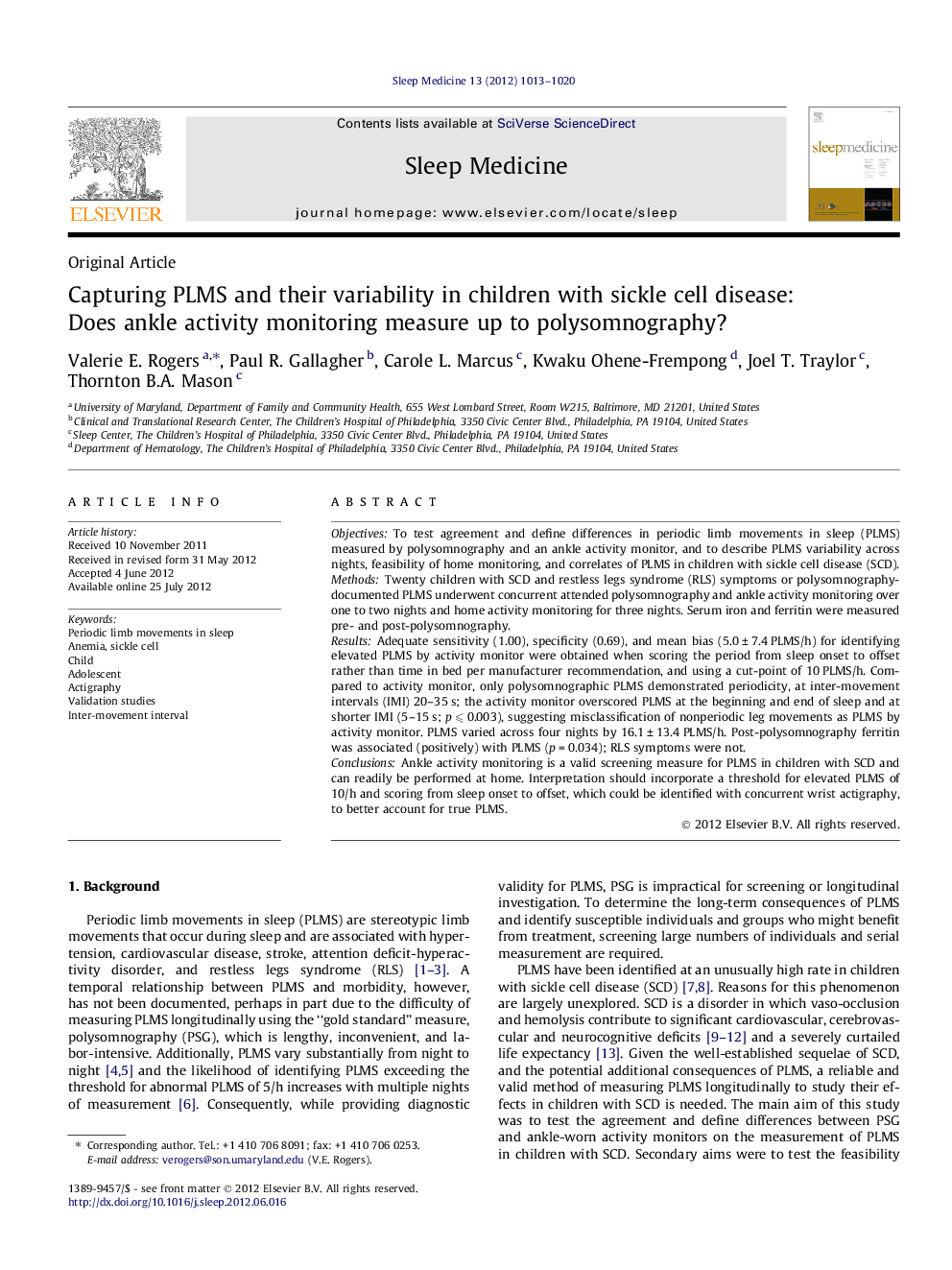| کد مقاله | کد نشریه | سال انتشار | مقاله انگلیسی | نسخه تمام متن |
|---|---|---|---|---|
| 6061450 | 1200278 | 2012 | 8 صفحه PDF | دانلود رایگان |

ObjectivesTo test agreement and define differences in periodic limb movements in sleep (PLMS) measured by polysomnography and an ankle activity monitor, and to describe PLMS variability across nights, feasibility of home monitoring, and correlates of PLMS in children with sickle cell disease (SCD).MethodsTwenty children with SCD and restless legs syndrome (RLS) symptoms or polysomnography-documented PLMS underwent concurrent attended polysomnography and ankle activity monitoring over one to two nights and home activity monitoring for three nights. Serum iron and ferritin were measured pre- and post-polysomnography.ResultsAdequate sensitivity (1.00), specificity (0.69), and mean bias (5.0 ± 7.4 PLMS/h) for identifying elevated PLMS by activity monitor were obtained when scoring the period from sleep onset to offset rather than time in bed per manufacturer recommendation, and using a cut-point of 10 PLMS/h. Compared to activity monitor, only polysomnographic PLMS demonstrated periodicity, at inter-movement intervals (IMI) 20-35 s; the activity monitor overscored PLMS at the beginning and end of sleep and at shorter IMI (5-15 s; p ⩽ 0.003), suggesting misclassification of nonperiodic leg movements as PLMS by activity monitor. PLMS varied across four nights by 16.1 ± 13.4 PLMS/h. Post-polysomnography ferritin was associated (positively) with PLMS (p = 0.034); RLS symptoms were not.ConclusionsAnkle activity monitoring is a valid screening measure for PLMS in children with SCD and can readily be performed at home. Interpretation should incorporate a threshold for elevated PLMS of 10/h and scoring from sleep onset to offset, which could be identified with concurrent wrist actigraphy, to better account for true PLMS.
Journal: Sleep Medicine - Volume 13, Issue 8, September 2012, Pages 1013-1020